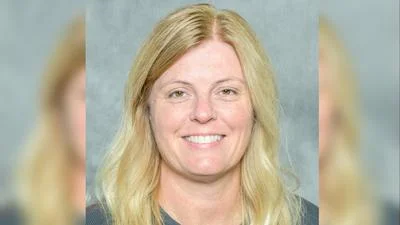Solar, Energy Efficiency, & Lighting (SEEL) Program | Pixabay
Solar, Energy Efficiency, & Lighting (SEEL) Program | Pixabay
AMES, Iowa – A new Iowa State University research project will combine traditional and high-tech uses of the sun’s power by studying how to grow crops amid an array of solar panels.
Funded by a $1.8 million, four-year grant from the U.S. Department of Energy, most of the research will be conducted a few miles south of Ames, where Alliant Energy plans to begin construction in April on a 1.35 megawatt solar farm – a partnership with Iowa State announced in fall 2021.
A multidisciplinary team of ISU researchers will raise bees and plant vegetables, fruits and pollinator habitat within the 10-acre Alliant Energy Solar Farm at Iowa State University, studying the emerging concept of agrivoltaics – using solar power sites for agricultural purposes to make more efficient use of the land and create value for the communities where solar panels are located. The hope is that integrating direct local advantages with solar energy will increase support for such projects.
“As renewable energy grows, it’s important to find opportunities for these projects to benefit people, beyond just providing renewable electricity. There’s good work to be done on this front, and we hope this research and demonstration will help identify the potential for communities to benefit from agrivoltaics,” said Anne Kimber, director of ISU’s Electric Power Research Center and a co-principal investigator for the DOE grant.
Construction on the solar farm is expected to be complete this fall. Horticulture research at the site will begin in full in spring 2024
Proving what’s possible
Farming on a solar farm raises numerous questions that need to be explored, researchers say. For one, there’s little data on what plants may still thrive when growing between the solar panels, despite receiving partial shade, said associate professor of horticulture Ajay Nair, the lead principal investigator. While fruit and vegetable crops typically need full sun, some shade might be a benefit as climate change leads to hotter summers. Identifying crops that grow in the modified microclimate without compromising yield and quality is critical.
There are also practical considerations, Nair said. Equipment used in food crop operations needs to fit between rows of panels. There are site management questions to iron out.
“Growing these types of crops under and around a solar farm on a scalable basis is different than just growing them. We want to demonstrate that’s possible,” he said.
Above all, agrivoltaics won’t be possible unless it appeals to growers. Economists will calculate revenue streams from the crops grown at the solar farm to determine if operations can be profitable, and researchers are planning outreach efforts to farmers and nonprofits.
“I think we all feel like there are going to be a lot of eyes on this. The people part will be just as important as the scientific research,” Kimber said.
Eager partner
Incorporating research was part of the plan from the start when Alliant Energy and Iowa State discussed a partnership to build a solar farm owned and operated by Alliant Energy on land it leases from the university.
Nair said Alliant Energy has been enthusiastic about designing the facility to fit researchers’ needs, including panels of two varying heights – some with a fixed tilt and others with the flexibility to adjust the angle – to allow for more experimentation.
“They’ve been a tremendous partner and collaborator from the very beginning stages of the project and instrumental throughout the planning, generous with their expertise in design and awareness of funding opportunities,” he said.
Alliant Energy also plans to build the panels with the capability to collect more granular information about energy production than at a standard solar facility. By comparing plot-by-plot energy production with temperature and moisture data collected from ISU sensors under the panels, researchers can see whether crops create microclimate changes that impact the panels.
“Agrivoltaics is so brand-new that there are a ton of questions to be answered. This grant, and the unique features of the Alliant Energy solar farm, will allow investigation of many of those questions,” said Ray Klein, director of the office of college partnerships for the College of Agriculture and Life Sciences.
Researchers said the collaboration with Alliant Energy was a big factor in being selected for the DOE grant, which included more than $8 million in funding spread over six projects.
“This is a great public-private partnership, working with industry on applied science,” Nair said.
Alliant Energy’s strategic partnerships team thought beyond the singular transaction of a customer-hosted solar project and considered how the project could support the agriculture economy, said Nick Peterson, strategic partnerships manager for Alliant Energy.
“Our efforts to collaborate with Iowa State University and move forward with the research and demonstration components of this project reaffirm our commitment to the agriculture industry,” Peterson said. “Our alignment is an example of how renewable energy and the ag industry can work together.”
Promising future
Research funding also unlocks the solar farm’s potential for teaching and outreach.
Matt O’Neal, a professor in plant pathology, entomology and microbiology, will manage the honey beekeeping, along with extension specialist Randall Cass. They’ll also measure the response from wild, native bees. O’Neal is looking forward to using the farm as an opportunity for students to explore beekeeping, horticulture and conservation.
“There will be a lot of teaching happening out there,” he said.
In addition to farmers and utility companies, Nair sees the project as a potential draw for the general public, a way for anyone in the community to see renewable power in action. Kimber envisions 4-H groups and school field trips coming for tours, possibly inspiring future electrical engineers, entomologists and plant scientists.
And this project is likely just the beginning, O’Neal said.
“This is a target-rich environment for research. I don’t think this will be the last grant to support this site,” he said.
Original source can be found here.





 Alerts Sign-up
Alerts Sign-up